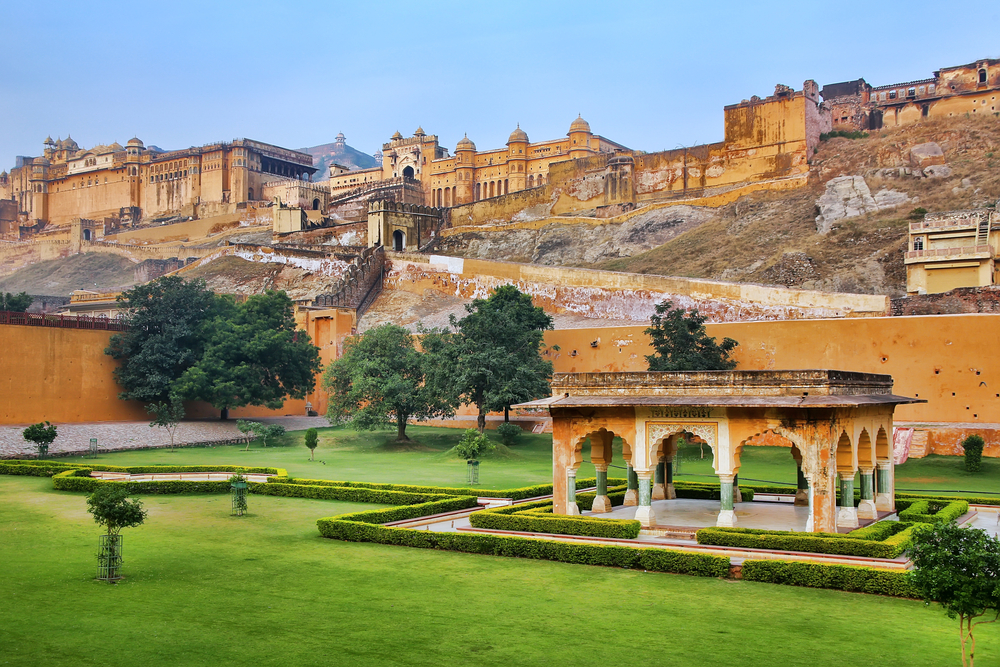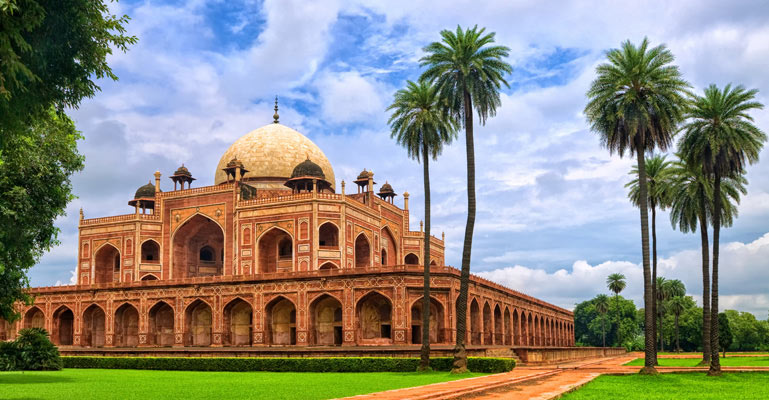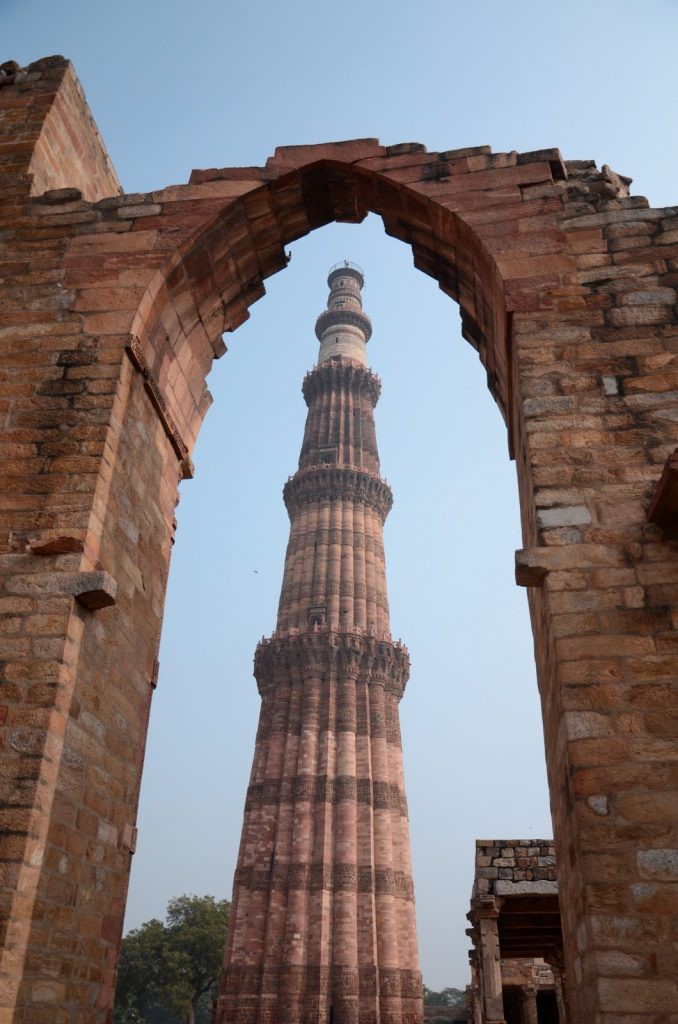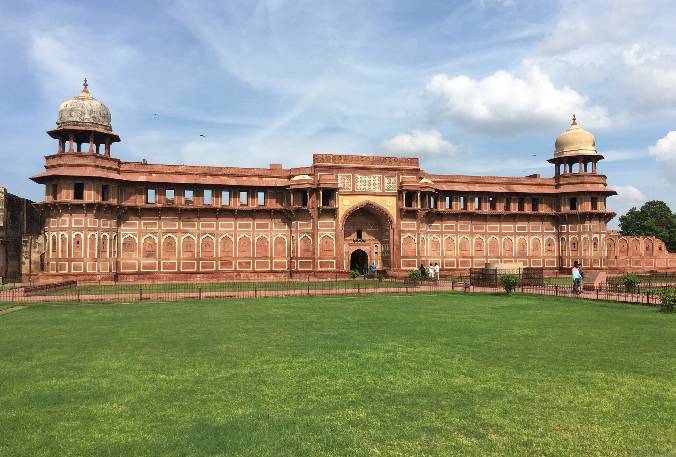35 Best Places to Visit in Varanasi in India
Varanasi, Banaras or Kashi, no matter what name comes up, it is a well-known fact that Varanasi is one of the oldest continually inhabited cities...

Home to the world’s best remnants dating back to 3300 BCE, India is a destination that suffices your thirst for heritage. The country has witnessed the rise and fall of different civilizations, empires, and dynasties that shaped its culture and history. And, no matter which part of the country you are visiting, you can still expect some heritage attached to it. The Golden Triangle Tourist Circuit of India is one such amazing route that offers one of its kind experience to explorers. Covering eight prominent (out of the total 36) UNESCO World Heritage Sites spread over the three destination of Delhi, Agra, and Jaipur, Golden Triangle is a must see for those who are bewitched by the India. The top UNESCO Heritage Sites of the Golden Triangle Tourist Circuit are:
 • Red Fort, Delhi
• Red Fort, Delhi
• Humayun’s Tomb, Delhi
• Qutab Complex, Delhi
• Taj Mahal, Agra
• Agra Fort, Agra
• Fatehpur Sikri, Agra
• Jantar Mantar, Jaipur
• Amber Fort, Jaipur
Let’s dig deep and learn more about these popular heritage attractions that are quite a hit.
1. Red Fort, Delhi
The red walled fort signifies the once flourishing Mughal reign in India. A perfect mélange of Mughal, Hindu and Afghan style of architectures, this octagonal designed edifice boasts the historical magnificence of Old Delhi (formerly Shahjahanabad). The various fascinating structures within the fort complex are the Diwan-e-Aam (the Public Audience Hall), Diwan-e-Khas (Hall of Private Audience), Moti Masjid (the Pearl Mosque) and Hayat Baksh Bagh (Life-Bestowing Garden). Adorned with beautiful floral artwork, intricate carvings, calligraphy works, and double domes, the red fort complex is a unique structure of the medieval Mughal period that transports the onlookers to the glorious era.
2. Humayun’s Tomb, Delhi
Humayun’s tomb (Maqbaera e Humayun) is the tomb of the Mughal Emperor Humayun commissioned by his wife Bega Begum in between 1569-70. The complex was designed by Mirak Mirza Ghiyas and his son, Sayyid Muhammad, architects of Persian origin. A perfect fusion of the Persian and Mughal architecture, the two story structure is perched in the heart of the Chahar Bagh garden, divided in four main parts by shallow water channels representing the Quranic description of heaven. The garden tomb features glorious arched alcoves, corridors and high double dome that are highly admired by visitors. It is also believed that the tomb laid the foundation of the Taj Mahal.

3. Qutub Complex, Delhi
Founded by Qutub-ud-din Aibak in honor of the dominance of the Mamluk Dynasty in Delhi, the Qutub Complex is a great masterpiece of the Afghan architecture in India. Visitors can spot carvings & verses from the holy Quran on this timeless wonder that features many notable attractions including the Qutub Minar (the tallest minaret in India), Ala’i-Darwaza, Quwwat-us-Islam mosque, Iltutmish tomb, Iron pillar, and Ala’i Minar.

4. Taj Mahal, Agra
Synonymous with India, the Taj Mahal is an iconic attraction commissioned by the Mughal Emperor in memory of his deceased wife Mumtaz Mahal, as a burial ground for his beloved. This ivory white marble mausoleum situated on the south bank of the Yamuna river is a perfect fusion of the Persian, Islamic, Turkish and Indian architecture. A matchless beauty, the Taj Mahal has been luring tourists with its matchless beauty and hues that change under the warm sunlight and cool moonlight.

5. Agra Fort, Agra
A legacy of the Mughal Emperor Akbar, the Agra Fort is one of the finest Mughal forts in India. Constructed with a blend of the Indo-Islamic architecture, the Agra Fort houses a variety of courtyards including the Jahangir Palace, Diwan-e-Am, Khas Mahal, Moti Masjid, and Diwan-e-Khas. A mesmerizing timepiece this historical milestone offers a great insight into the art and culture of Mughal rule during those days.

6. Fatehpur Sikri, Agra
Fatehpur Sikri is a town in Agra, situated at a distance of 36 km from Agra. The first planned city, it was founded as the capital of the Mughal Empire in 1571 by Mughal Emperor Akbar himself. The red sandstone complex features ornamental arches, domes and brackets, perfectly carved infusing the Indian and Muslim cultures. The Ibadat-Khanah, Din-i-Ilahi, Tarikh-iIlahi, Buland Darwazah and Sheikh Salim Chishti tomb are the prominent attractions within the Fatehpur Sikri that reflects the customs and life of the Mughal Court. Visit this amazing marvel to discover the real story behind the battle of Khanwah fought between the Mughal Emperor Babur and Rana Sanga of Mewar.

7. Jantar Mantar, Jaipur
Built in the 18th century by Sawai Jai Singh, the Jantar Mantar is an astronomical observatory which features the world’s largest stone sundial, along with other astronomical instruments. The glorious structure has captured the attention of astronomy enthusiasts and travelers who wish to witness the astronomy and the scientific knowledge of the 18th century India.
8. Amber Fort, Jaipur
An exemplar of the Mughal-Rajputana architecture, Amber fort is a hill fortress nestled in the Aravalli ranges overlooking the Maota Lake. With artistic archways, mirror work, symmetric paintings, cobbled pathways, and intricate carvings, the fort will leave you transfixed. To relish a royal experience, ride to the top of the fort on a caparisoned elephant’s back.
Now that you have enough information about these heritage sites of the Golden Triangle Tour what else are you waiting for? Book your escape with Golden Triangle Tour Packages and explore the vast heritage of India .
Must Read: The Ultimate Things To Do In Delhi
Varanasi, Banaras or Kashi, no matter what name comes up, it is a well-known fact that Varanasi is one of the oldest continually inhabited cities...
India’s vastlands have pulled in travelers from all corners of the globe for thousands of years. These times are no different as globetrotters throng India...
India—a land of endless surprises—is home to some of the world’s most mesmerizing travel destinations. Whether you’re a history buff, a nature lover, a spiritual...
You are one step closer to having the best journey of your lifetime! Talk to us, write to us all that you have envisioned for your India trip, and one of our travel experts will connect with you on priority. To help you explicitly we have WhatsApp and Email addresses!
Leave a Comment ▼